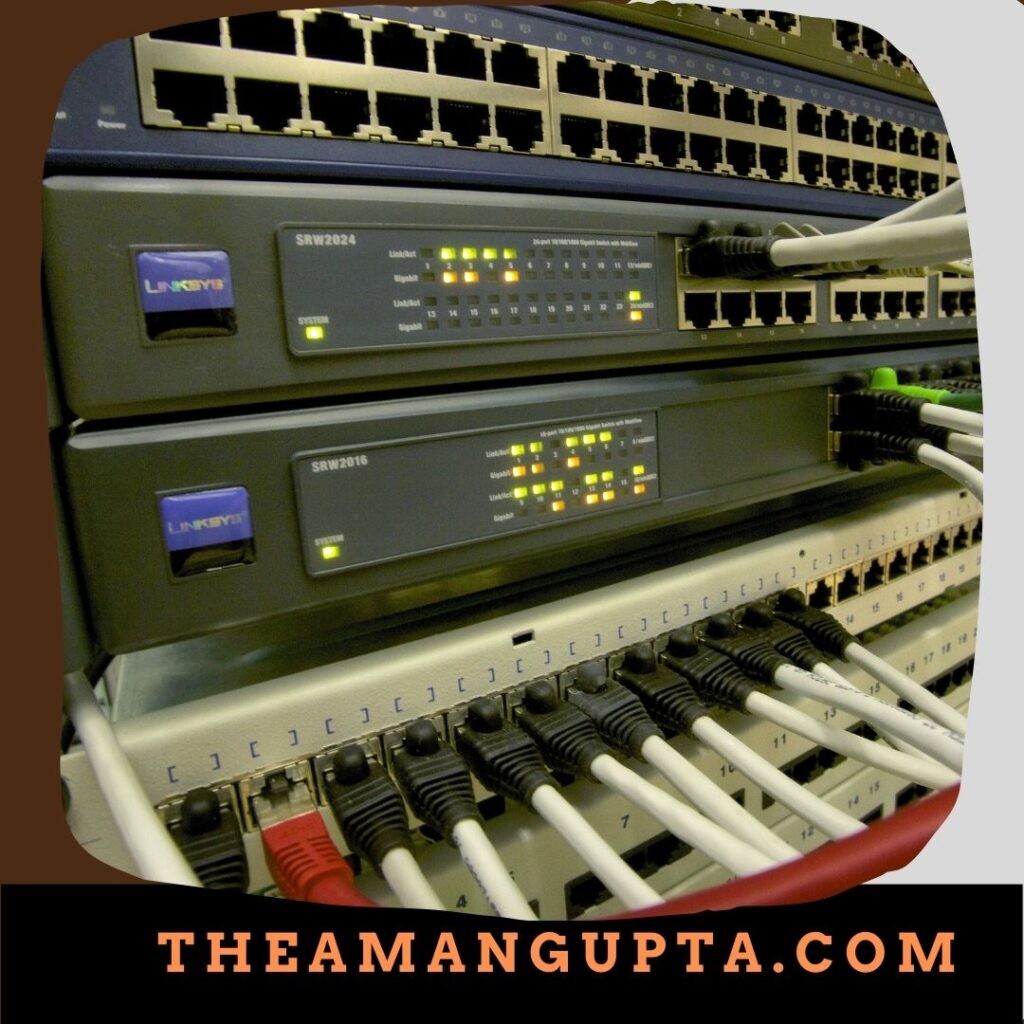Hello Readers. With the use of computer networking, machines with various operating systems. And languages, cables, and geographical locations can share resources and communicate with one another. Some Basics About Networked Computers are topic of discussion.
Basic and advanced principles of Data Communication & Networks are provided through Computer networks (DCN). We’ve created a computer networking tutorial that is suitable for both experts and newcomers.

Our computer network lesson covers all computer network-related topics, including introduction, characteristics, different types of computer networks, architecture, hardware, and software, as well as the internet, intranet, websites, LANs, and WANs.
Any device that can send or receive data can be a node, including a computer, printer, or other hardware. Instead, one computer completes the entire operation, while each individual computer completes a portion of it.
Characteristics of computer networks
The following benefits are offered:
- Easy file sharing
- Faster connection speed
- Sharing of software and hardware components
- Security
- Scalability and Reliability
- Easy backup and also rollback to prevent data loss
- Computer Network Types
- Let’s examine its physical size classification for a simple introduction.
- Let’s start with Some Basics About Networked Computers: LAN, MAN, WAN.
Local Area Network (LAN)
A LAN is a sort of computer network that primarily connects one or a limited number of locations, such as a computer lab, cybercafé, or a single office building.
A SOHO LAN is the networking of a house or small structure (Meaning Small Home Office Local Area Network). There are typically not many computers or other network devices, such as switches and routers, engaged with this sort of networking.
Network for Metropolitan Areas (MAN)
A MAN is a kind of computer network that is bigger than a LAN but not quite as big as a WAN (Wide Area Network). Between LAN and WAN, it serves as a bridge. It can also be thought of as a mix of more than one LANs because it covers a wider region than a LAN and includes a greater number of computers.
Read More: Cloud Computing
Wide Area Network (WAN)
which spans thousands of hectares of land, and is the biggest type of computer network. There is no restriction on the number of computer and networking tools or resources used; it can span states and even international borders. Since its failure could result in significant data loss or theft, this form of networking typically needs a full-time administrative inspection.
Networking Equipment and Terms
Router

To link various networks together, a router is needed. Hence, a router is required for the interconnection of two or more LANs. It determines the data’s path after it has been sent. Because the router uses IP addresses at its interface and functions at layer 3 of the OSI (Open System Interconnection) model of communication, it is referred to as a layer three device.
Ethernet
Ethernet refers to the networking-related cabling and port system. Used to link a computer to every other networking equipment as well as for computer-to-computer connections. The RJ45 connector is the most popular. Fast Ethernet ports are what Cisco devices refer to as Ethernet ports on a router or switch.

MAC
The MAC (Media Access Control) address is a 64-bit manufacturer’s address. Inscribed on the motherboards of computers, routers, and switches. Every computer, switch, or router has moreover a MAC address that is exclusive to that device. A source of a distinctive identity for electrical gadgets. It is equally unique to each person as their fingerprint.
IP address (Internet Protocol address)
Computers, switches, and routers are all given IP addresses, which are 32-bit numbers that make it simple for other networked devices to find them. Currently, this is also available in IPv4 (Internet Protocol version 4) and IPv6 (IP version 6).
Scalability
This refers to a network’s capacity to grow in a way that however makes space for more devices. To connect to and included in it without substantially altering the network as a whole.
Read More: The World Of Robotics
WI-FI
Wi-Fi, also known as wireless networking, is a technique for connecting computers to a network devoid of cables. It makes use of access points, wireless routers, and other Wi-Fi-compatible devices.
Port
A port is a logical channel that enables the transmission and reception of data to and from an application. Any host may be running a number of different programs, and each of these apps. Recognized by the port number that it is doing so. Due to the fact that a port number is a 16-bit integer, there are 216 ports available.
Hope this helps you understand Some Basics About Networked Computers. Stay Connected For More Discussions.